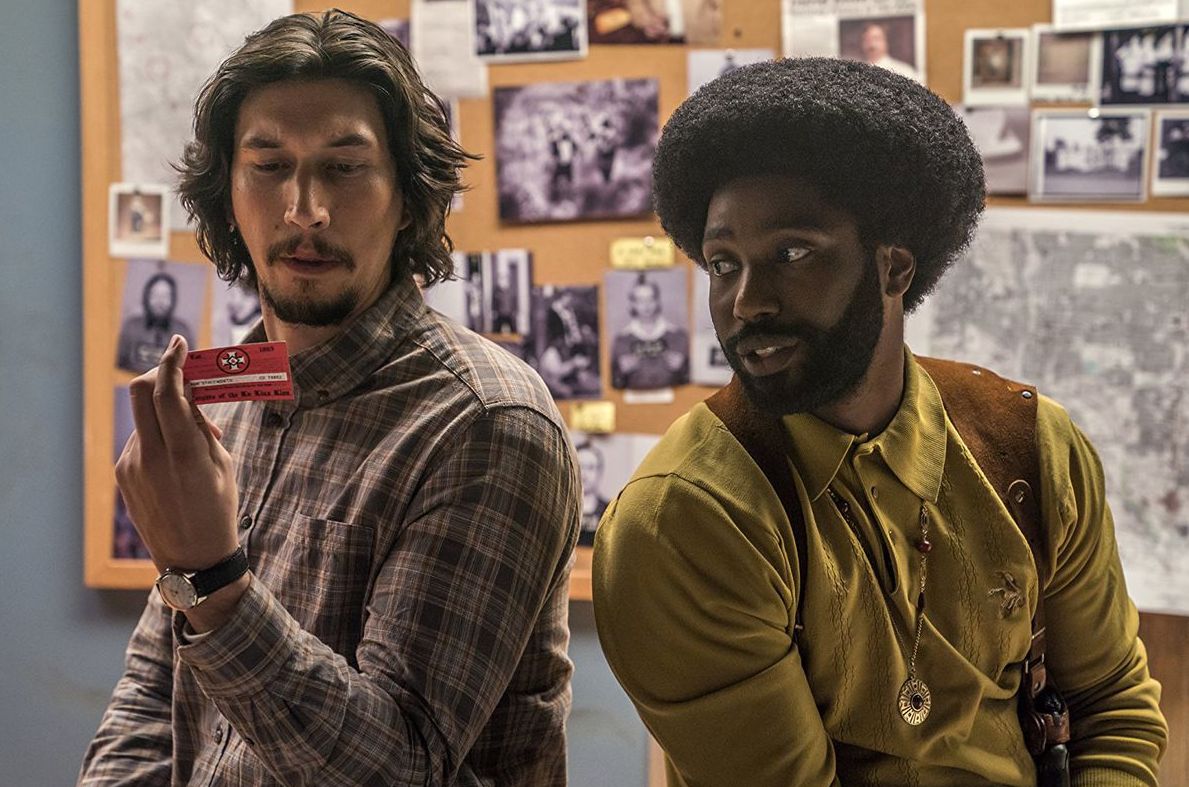
'BlacKkKlansman' Review
 “BlacKkKlansman” is the latest Spike Lee “joint”. It’s the director’s most high-profile release since 2006’s “Inside Man” and will likely be seen by many critics and movie fans as a career “comeback”. As a stand alone film, this is a unique and thought/emotion-provoking effort, though, at times a bit heavy-handed.
“BlacKkKlansman” is the latest Spike Lee “joint”. It’s the director’s most high-profile release since 2006’s “Inside Man” and will likely be seen by many critics and movie fans as a career “comeback”. As a stand alone film, this is a unique and thought/emotion-provoking effort, though, at times a bit heavy-handed.
John David Washington – Denzel’s son (and a former pro football player) – gives a commanding, breakthrough performance as Ron Stallworth, the man whose book this film is based on. In 1979, Stallworth, a young black man living in Colorado Springs, Colorado, decides to join the Colorado Springs Police Department, becoming the first black officer on the force. Wanting to get away from rookie duties, he makes a call to the local branch of the Ku Klux Klan (during which he poses as a white man). He’s invited to join the white supremacist group.
But, obviously, Stallworth can’t meet any Klansmen in person. So fellow detective Flip Zimmerman takes on the role of Stallworth when he’s not on the phone. Adam Driver delivers some of his best work as Zimmerman. He wears a wire during all his KKK meetings, while Stallworth is snapping surveillance photos and compiling information on the dangerous group.

The script is infused with political commentary, including comparisons to what’s going on with race relations in America today. Some of this stretches beyond the limits of the core, 40-year-old story. But for the most part, Lee stays on point.
The director also weaves the history of blacks in film into “Klansman”. The controversial D.W. Griffith epic “The Birth of a Nation” plays a key role. When released in 1915, “Birth” was applauded by the masses who saw it as an accurate portrayal of the events surrounding The Civil War – including the depiction of African Americans: sex obsessed, unintelligent apes. Today, most decent people of all races view “The Birth of a Nation” as racist and vile cinema. That dramatic contradiction is depicted hauntingly in a showcase scene late in the film involving a black pride rally and a KKK initiation ceremony.
Lee begins “Klansman” with the final, sweeping shot from “Gone with the Wind”. He also touches on the blaxploitation film phenomenon of the 70s.
At times Lee’s trademark close-ups feel too intentional, and some scenes do linger longer than they should. The entire cast is up to the challenge of this highly-charged material, including Topher Grace as KKK Grand Wizard David Duke. Alec Baldwin, Harry Belafonte and Corey Hawkins have notable one-scene cameos.
At its core, “BlacKkKlansman” is the true story of a man who placed himself in a precarious situation, who then has to do his job and make it out of it alive. Add in the racial, social and political aspects and you have one of the most important on-screen history lessons of 2018.


